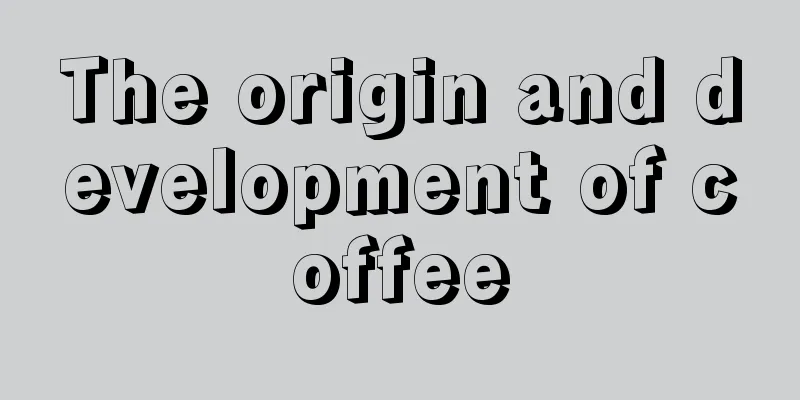The origin and development of coffee

1. The Origin of CoffeeCoffee is a drink made from ground coffee beans that originated in Africa. According to legend, in the 9th century AD, a shepherd named Kaldi discovered coffee on the Ethiopian plateau. He noticed that his flock became unusually active after eating a red fruit. Curious, Kaldi tried the fruit and found that it had a refreshing effect. 2. The spread and popularity of coffeeAs coffee was discovered and used, it soon spread to the Arab region. The Arabs introduced coffee trees to their country and began to grow and process coffee beans. In the Arab region, people began to make drinks by mixing ground coffee beans with boiled water. From the Arab region, coffee gradually spread to other countries and regions. In the late 16th century, during the Ottoman Empire, Turkey became the first country to grind boiled coffee beans and brew them with boiling water. This method made it more convenient to make coffee and better met people's requirements for the taste of the drink. In the early 17th century, coffee began to enter Europe. The first countries to introduce coffee were Italy and the Netherlands. In Italy, people began to enjoy this novel drink in special coffee houses, and gradually formed a strong and unique espresso culture. 3. Coffee industry and tradeAs the demand for coffee continues to grow, countries around the world have begun to actively participate in the coffee industry. From planting, picking, processing to transportation and sales, the entire process has formed a huge and complex supply chain. Some regions have become major producers due to their climate and soil conditions. Brazil is one of the world's largest coffee producers, having developed rapidly in the late 19th century and still holds an important position today. Trade has also become an important factor in promoting global economic development and communication. Coffee trade has driven cooperation and communication between many countries and promoted the development of globalization. 4. Coffee culture and coffee shopsWith the spread and popularity of coffee, different coffee cultures have been formed in different regions. In Italy, people like to taste strong and concentrated espresso in small and cozy coffee houses; in the United States, people prefer to drink large cups of latte or cappuccino with milk, sugar and other condiments. At the same time, coffee shops have also become places for socializing and leisure. People can meet with friends, work or relax here. Coffee shops of different styles and themes have sprung up like mushrooms after a rain, becoming an important part of the city. 5. Children and health issuesAlthough moderate coffee consumption is safe and healthy for most people, excessive caffeine intake may have negative effects on some specific groups (such as pregnant women, heart patients, children, etc.). For children, excessive caffeine intake may lead to problems such as nervous system excitement, sleep problems and poor concentration. Therefore, parents need to reasonably control their children's coffee drinking and ensure that they get enough water and nutrition. 6. Coffee and Environmental SustainabilityAs global attention to environmental sustainability increases, the coffee industry has also begun to pay attention to its impact on the environment. Some countries and organizations have begun to promote sustainable planting and procurement practices to reduce the use of chemical pesticides, protect soil quality and increase farmers' income. At the same time, some companies are also working to reduce packaging waste and provide recycling or reuse programs. These initiatives help reduce resource waste and reduce carbon emissions. 7. Future development trend of coffeeWith the advancement of technology and changes in consumer demand, the coffee industry will face many challenges and opportunities in the future. On the one hand, people's demand for high-quality, specialty coffee is growing, which will drive the further development of the coffee industry. On the other hand, the application of technology will also change the way coffee is produced and consumed. For example, drones can be used to monitor farmland conditions and fertilize; smartphone applications can help consumers understand the origin and quality of coffee. In short, coffee, as a popular drink, has a broad and profound cultural background around the world. It is not only a refreshing drink, but also a symbol of socializing, leisure and enjoying life. |
<<: Santonban coffee beans: mellow taste and unique flavor
>>: Coffee Latte Art Tutorial: Creating Exquisite Coffee Art
Recommend
List of places where Stardew Valley coffee beans are sold
List of places where Stardew Valley coffee beans ...
Don't wait in line at Starbucks. Coffee machines are so cheap now.
As people's living standards continue to impro...
The origin and authentic production of Mocha coffee
Mocha coffee originated in the Middle East and is...
Drinking coffee helps improve male sexual function. Science reveals how caffeine activates your vitality and passion
Drinking coffee helps improve male sexual functio...
China’s coffee bean production areas: quality and tradition blended into a unique flavor
China’s coffee bean production areas: quality and...
Exploring the profitability of coffee shops, revealing the real net income of coffee shops in a day
Abstract: This paper explores the profitability o...
Starbucks coffee beans: taste the world and enjoy the unique charm of coffee
Starbucks coffee beans: taste the world and enjoy...
Cafe Design: Creating a Unique Space and Savoring Strong Coffee
Create a unique space, tasting strong coffee as t...
How to drink delicious charcoal-roasted coffee
The delicious recipe of charcoal-roasted coffee C...
Philips fully automatic coffee machine operation guide
Philips fully automatic coffee machines are easy ...
Where to buy coffee beans? Recommended places!
Coffee beans are the basic raw material for makin...
Do you know the three most famous coffee brands in Italy? Explore the unique charm behind the rich flavor
Do you know the three most famous coffee brands i...
A comprehensive list of common coffee bean types: Arabica, Robusta, Blue Mountain, Mocha, etc.
A comprehensive list of common coffee bean types ...
Coffee best-selling rankings: ten most popular coffee drinks recommended
Coffee best-selling rankings: ten most popular co...
Drinking coffee for the elderly has unexpected benefits
Drinking coffee for the elderly has unexpected be...









